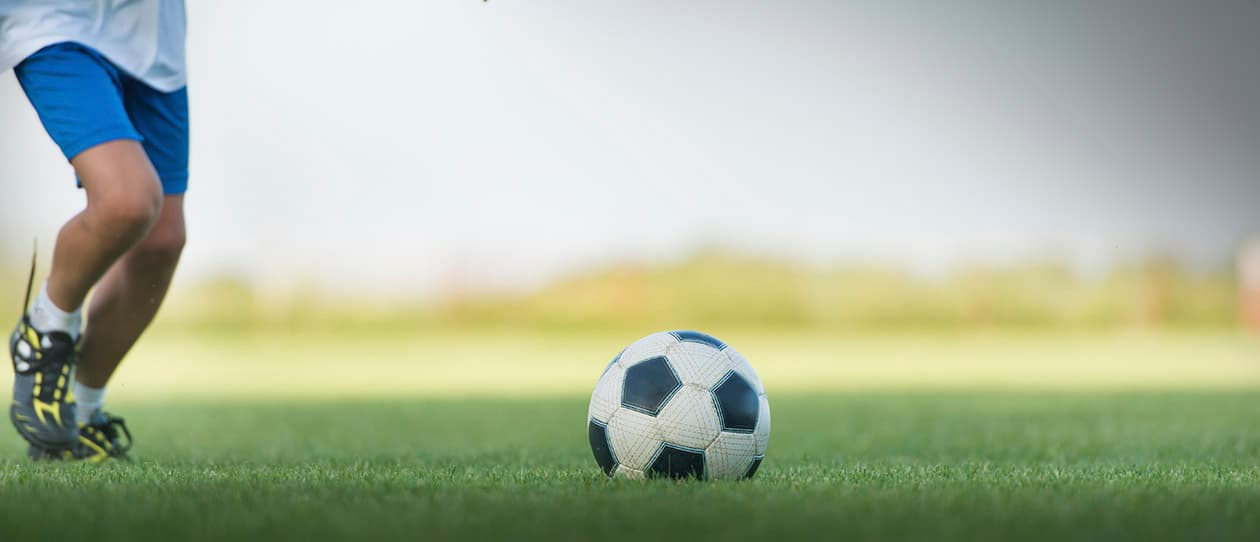
- Health hub/
- Kids Health/
- Why is my active child overweight?


A recent US review of 19 studies comparing sports participants and non-participants on weight status, physical activity and diet, raises questions about why, despite the obvious pluses of physical activity, kids that play sport are not always protected from obesity.
The idea that physical activity may not protect youngsters from gaining excessive amounts of weight may sound controversial, but there are several variables that should be factored into the equation.
Why active children may be overweight
In isolation, just like with adults, sport will not protect kids from obesity - despite its potential to improve health and wellbeing. Although calling for more research in the area, the American study identified some possible reasons why sport-playing children fall victim to obesity:
1. Energy expenditure
Although many ball sports, including soccer or cricket, are considered aerobic, or fat burning in nature, there are periods of low or even zero intensity. One study found that only one in four youth sport participants met recommended levels of activity during their sporting practice and on average were inactive for 30 minutes during training sessions.
So, especially if otherwise inactive, the type of sport, the duration and the intensity of activity needs to be considered when calculating how much energy a child is actually expending. Parents need to be mindful not to assume that kids are exercising 100% of time they are playing a sport, as the reality is often much less.
Dietitian and mother of four, Kara Pierce, says if a sporting activity last for 60 minutes or less (and most junior team sports generally fall into this category), the body’s fuel stores are not threatened. This is providing a child has prepared well prior to the event, that is, had a good breakfast or lunch containing protein and low GI carbohydrates along with consuming fluids like water for hydration.
2. Dietary habits and over consumption
Kids who participate in sports may have better nutrient intake than those who don’t, but they also tend to consume more calories overall. Physical activity may increase appetite. Although children require slightly more energy than they use up, to accommodate growth and development, the basic premise of weight gain, that is, calorie intake exceeding the amount of energy used, should always be kept in mind.
3. Inappropriate sport-linked food and refreshments
Foods that are high in calories and low in vitamins and nutrients like lollies, high-sugar sports drinks, pies and sausage rolls are widely available at children’s sporting events. Along with the accessibility issue, marketing also plays a part in normalising the relationship fast food has with sport.
Energy and sports drink manufacturers align themselves with physical activity too. Savvy marketing practices that encourage parents to buy, and children to consume, their products – even though they are often not appropriate choices, can sometimes be tricky to navigate.
4. Quick food fixes
What children eat during half time and after full time is under scrutiny, as packaged convenience foods are now on the menu. In addition to forming potentially negative dietary habits, kids who play sport may also consume more takeaway foods post game or training as time-poor parents and carers opt for quick fixes over healthier, sit down mealtimes.
Although there are several other reasons why playing sport may not be an effective in preventing obesity in children, dietary habits and practices are undoubtedly critical. Despite the fact that mums and dads are leading increasingly busy lives, what is served up during and after exercise, as well as what is consumed at sporting grounds is important. This doesn’t mean that quick and easy foods are off limits, but a bit of thought - to avoid potentially counteracting exercise benefits, can go a long way.
Child-friendly sports snacks
So, with this in mind, here are a few child friendly sports snacks and refreshments to keep in mind next time you’re off to training or a game.
Fantastic fruit
Oranges may be considered a little passé by some but they are still a perfect half time sports snack. High in water content, oranges are not only a speedy way to rehydrate kids but they are also rich in nutrients including vitamin C. Amongst its many benefits, vitamin C has antioxidant properties and is a good immunity booster.
But as they say, variety is the spice of life and mixing up snack options can be a good way to keep kids coming back for more. Things like peeled and cut-up bananas, mandarins, grapes, melon or even sliced apples (with a little orange juice poured over the top to avoid browning) are good alternatives as they tend not to fill up little bellies too much but give kids an energy boost while quenching thirst too. If you want to get creative, offering a few different varieties of fruit– perhaps even going for two or three types cut into small pieces on wooden skewers, is another fun but health-conscious snack.
Quick, healthy alternatives
If basic fruit doesn’t appeal, serving up simple things like sandwich fingers with protein filling, mini wholemeal banana or berry muffins, fruit smoothies, low fat yogurt or cheese sticks are nutritious alternatives.
Fluids to rehydrate
Many sports drinks are high in sugar content and are often only beneficial to replace fluids lost and refuel carbohydrates if activity is intense and generally over an hour long. Water is generally the optimal way to quench a child’s thirst during sporting physical activity.




